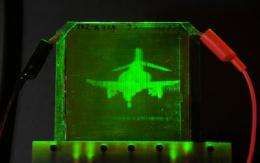What was once a mere dream in science fiction movies is now becoming a reality with the advancements in holographic technology. From 3D holograms to holographic displays, this groundbreaking technology is revolutionizing the way we interact with digital content.
Understanding Holographic Technology
At its core, holographic technology involves the projection of light to create three-dimensional images that appear to float in space. Unlike traditional flat screens, holographic displays give viewers a sense of depth and realism, making them ideal for immersive experiences.
The Applications of Holographic Technology
One of the most exciting aspects of holographic technology is its wide range of applications across various industries. From entertainment and gaming to healthcare and education, holographic displays have the potential to transform the way we consume information and interact with digital content.
Entertainment and Gaming
Imagine watching a live concert or sporting event in holographic form, with lifelike performers and action happening right in front of you. Holographic technology has the power to revolutionize the entertainment industry, providing audiences with truly immersive experiences that blur the line between the virtual and physical worlds.
Healthcare and Education
In the healthcare sector, holographic technology is being used for medical training and visualization, allowing doctors to perform virtual surgeries and diagnose patients more accurately. In education, holographic displays can bring history and science lessons to life, making learning more engaging and interactive.
The Future of Holographic Technology
As holographic technology continues to evolve, we can expect to see even more advanced applications in the near future. From holographic telepresence to augmented reality glasses, the possibilities are endless for how this groundbreaking technology can reshape our digital world.
Holographic Telepresence
With holographic telepresence, users can interact with others in a virtual space as if they were physically present. This technology has the potential to revolutionize communication and collaboration, allowing for more immersive and engaging virtual meetings and conferences.
Augmented Reality Glasses
Augmented reality glasses equipped with holographic displays can overlay virtual information onto the real world, creating a mixed-reality experience that enhances our everyday interactions. From navigation assistance to real-time information display, these glasses have the potential to revolutionize how we interact with the world around us.
Conclusion
From sci-fi fantasy to real-world innovation, holographic technology is shaping the future of digital content consumption and interaction. With its wide range of applications and endless possibilities, this groundbreaking technology is set to revolutionize how we see and interact with the world around us.


